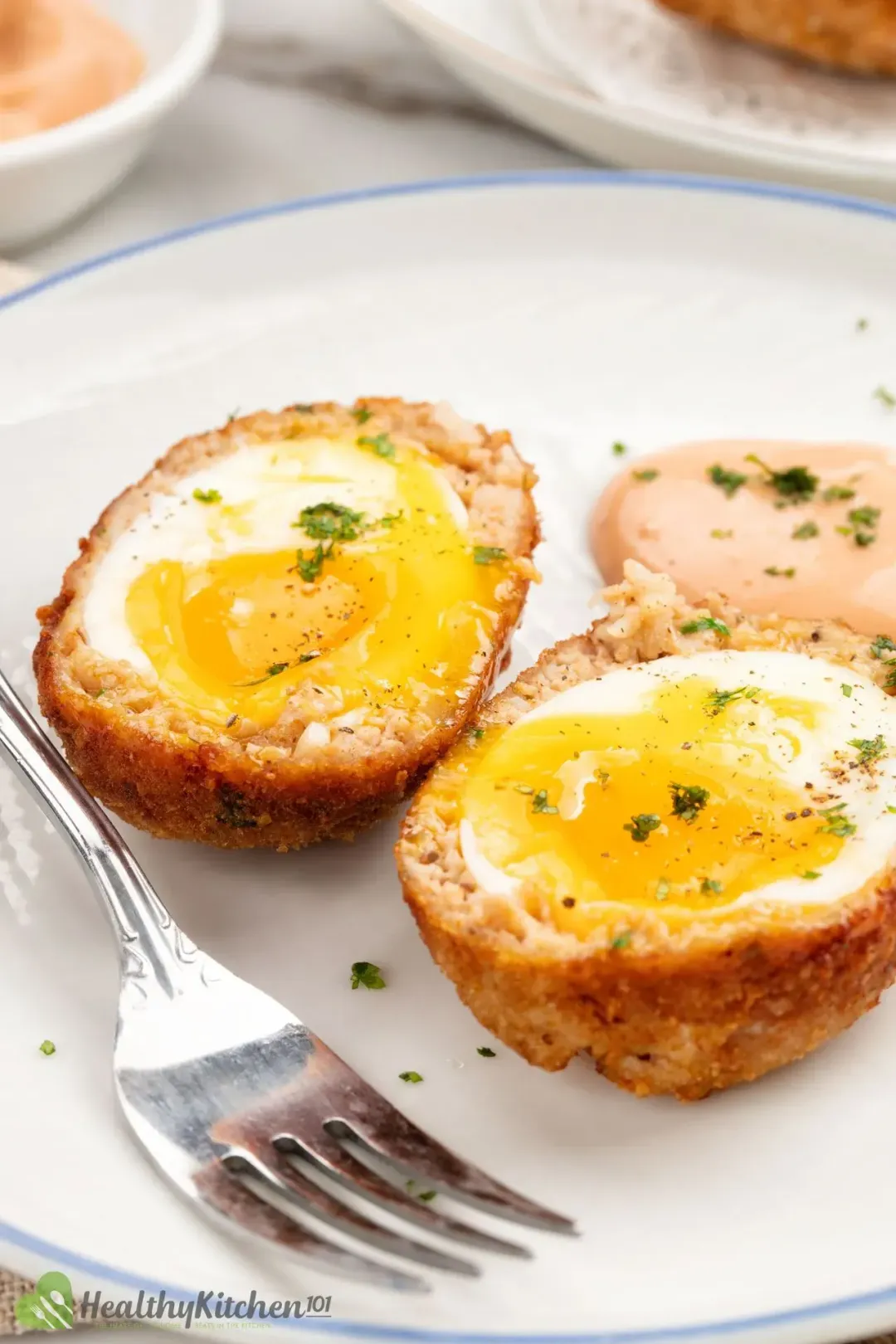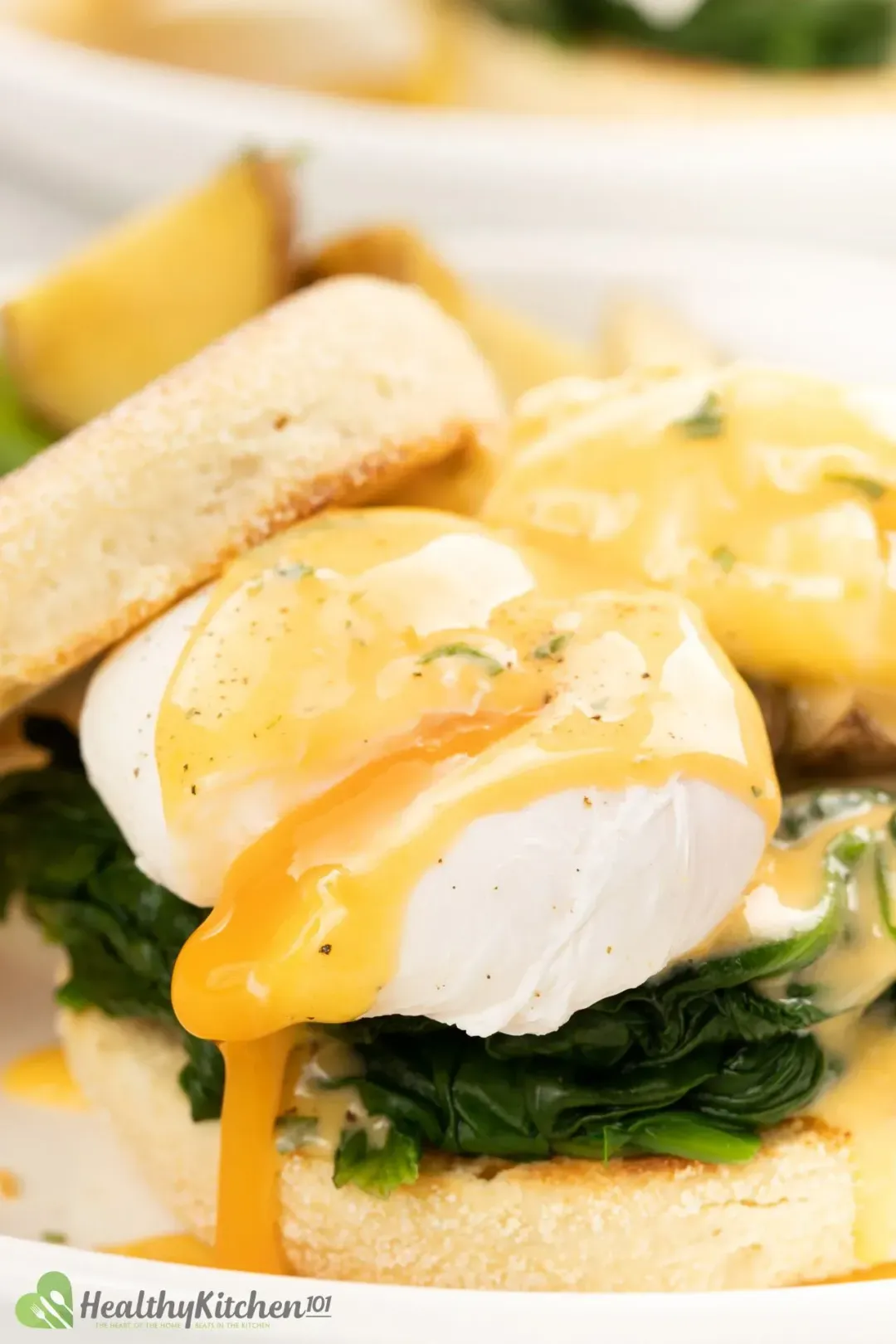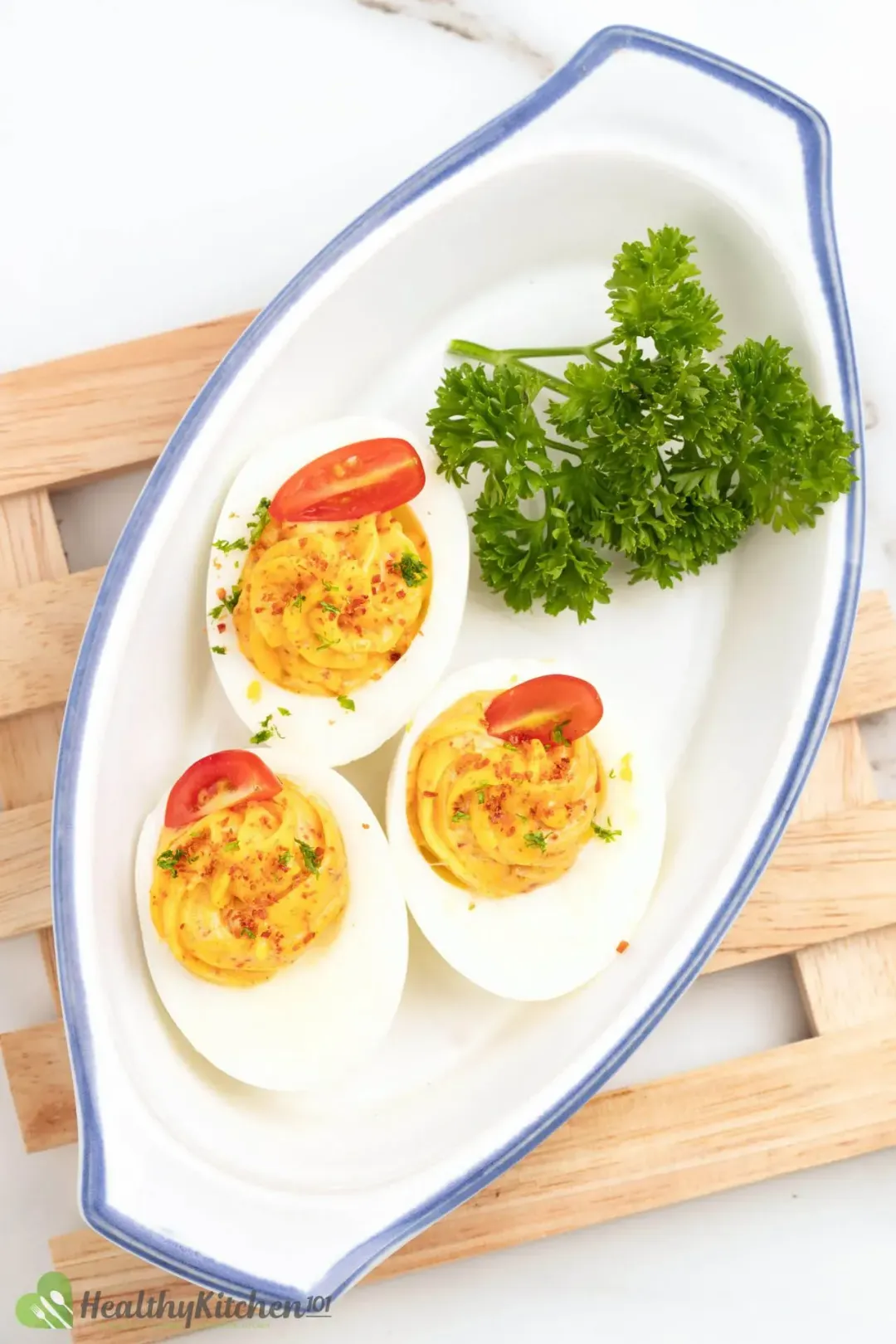Today we continue our egg saga with this healthy scotch eggs recipe. And everything is made from scratch.
We’ll talk about how deep-fried eggs can be healthy, and all the basics of how to make scotch eggs. First, let’s define scotch eggs.
What Is a Scotch Egg?
Scotch eggs are a beloved staple in British cuisine. A scotch eggs recipe mainly consists of soft- or hard-boiled egg, ground meat, breadcrumbs, and seasonings.
The egg is wrapped in seasoned ground meat— usually pork sausage, and coated in breadcrumbs before being baked or deep-fried. Scotch eggs can also be served with a sauce for dipping as well.
When you bite into a scotch egg, you’ll get to experience several layers of different textures and flavors. The crispy exterior, the savory sausage, and the soft, rich egg— all come together and create an indescribable gastronomical sensation.
You can serve these flavorful bombs as a snack or an appetizer. Mini versions of scotch eggs use quail eggs to make bite-sized finger food that are perfect for any party.
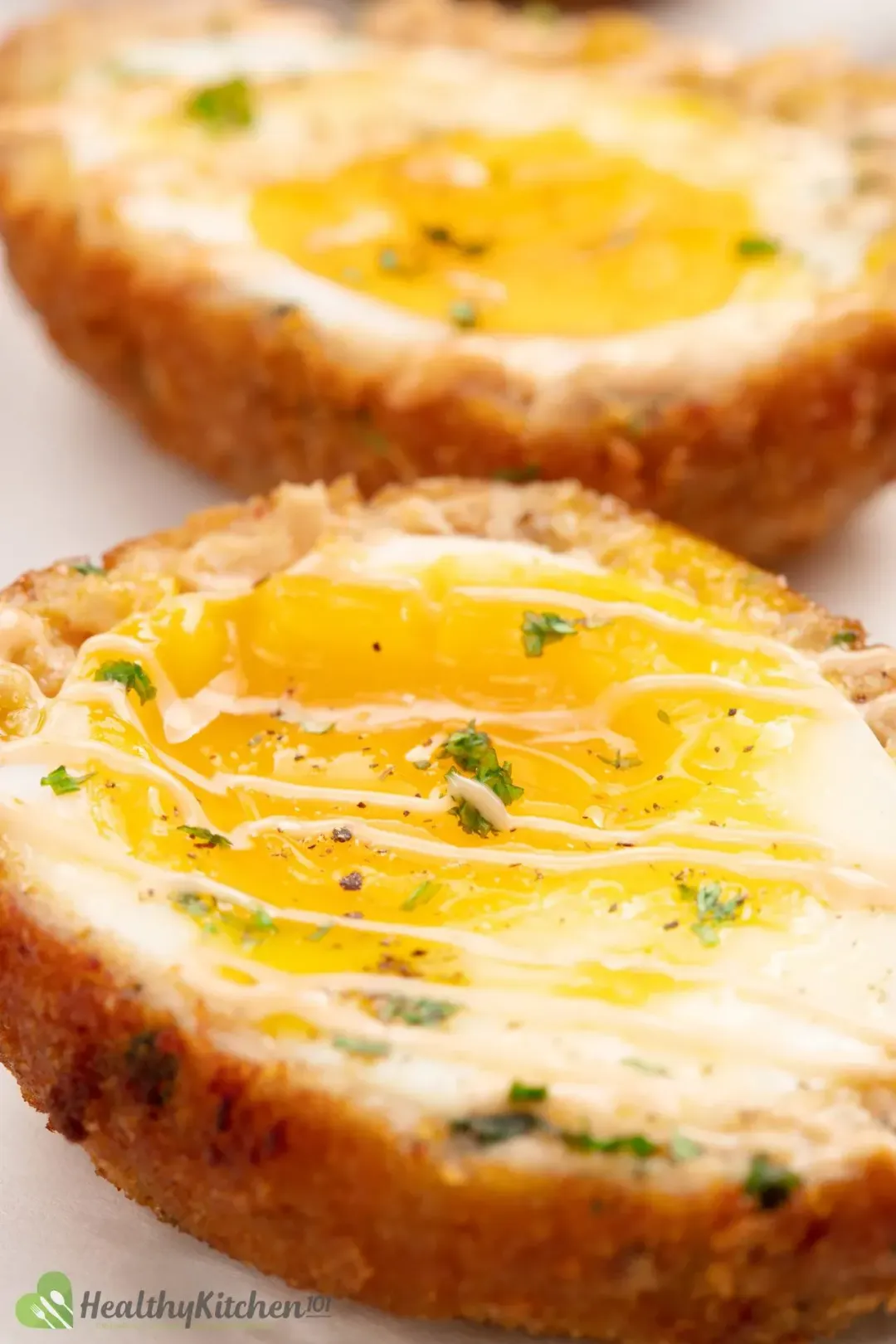
Is Our Recipe Healthy?
Unlike most deep-fried foods, our scotch eggs recipe is healthy. It doesn’t absorb too much oil during the cooking process, nor is it heavily seasoned with salt before serving.
The deep frying adds only 1 teaspoon of canola oil to our scotch eggs, which translates to less than 0.1 grams of saturated fat per serving.
The majority of saturated fat in this dish comes from the eggs themselves, ground pork, and mayonnaise. It totals to about 4 grams, far below the daily limit of 23-30 grams.
We also monitored sodium in all the ingredients, including mayonnaise, ketchup, and seasoning salt. This is not exactly a low-salt recipe, as we still want it to taste good, but the amount of sodium is kept below the recommended limit of 300 grams.
We may not have a specific recommendation on how much your daily carb intake should be, but these scotch eggs are low-carb, each providing only 4 grams of carbs.
If you want to know more about your recommended daily calorie, saturated fat, or sodium intake, check out our healthy eating guidelines.
1. Calories
According to our nutrition calculator, there are 207 calories per scotch egg. Although this is enough calories for a side dish, appetizer, or a snack, it’s not enough to fuel your body.
You’ll need to pair these eggs with a main dish to consume more calories and keep your body functioning properly. And we will tell you what to serve with scotch eggs later.
By reducing your sodium intake, you can lower your blood pressure and thus reduce the risk of heart diseases.
2. Carbs
One scotch egg contains about 3.6 grams of carbs. This is relatively low on carbs so this makes our scotch eggs recipe suitable for a low-carb diet.
Check out the best scrambled eggs or this fantastic, healthy breakfast for more recipes to add to your repertoire.
How Long Does It Last in the Fridge?
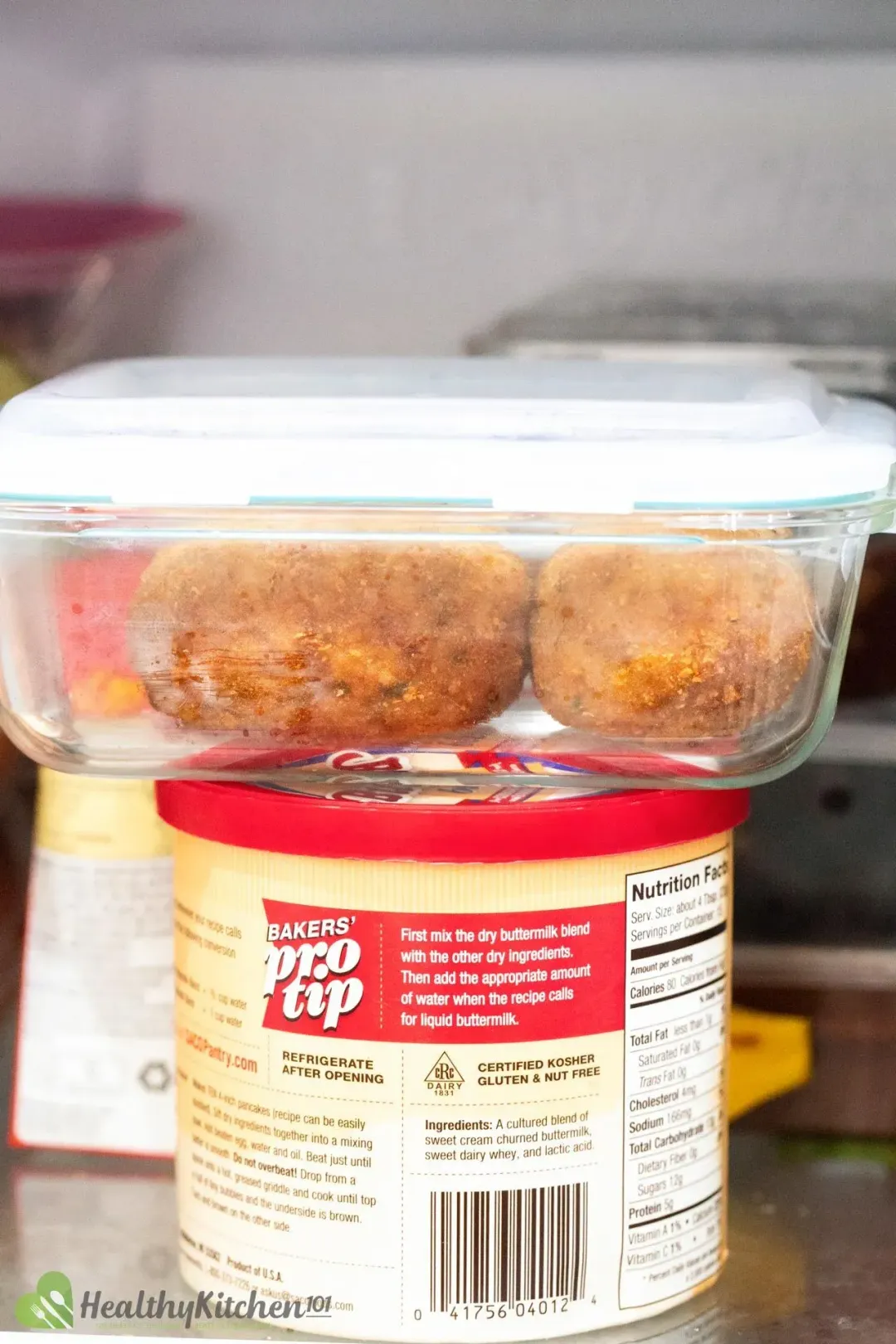
For scotch eggs with a soft-boiled yolk, we recommend eating it up as soon as possible. Just to be on the safe side and avoid the increasing risk of bacteria growth.
Hard-boiled scotch eggs, on the other hand, can last up to one week in the fridge. Be sure to let them cool completely before putting them into an airtight container and in the fridge.
Both raw and cooked hard-boiled scotch eggs can stay good in the freezer for one month.
For more eggs recipe ideas, have a look at our healthy eggs roundup.
What to Serve with
Traditionally scotch eggs are served as a cold snack or picnic food in the UK.
In the US, they are often served hot with a sauce or gravy for dipping. They can be a great finger food and/or appetizer.
Although they are delicious on their own, they are not nutritious enough for your body. And eggs alone can’t make you feel full either.
That is why we need to pair scotch eggs with other foods. Here are some suggestions:
1. Salads
Since the scotch eggs are savory and decadent enough, you’ll need a salad. An addition of greens gives brightness, added nutrition and fiber, thus balances out the meal.
We recommend a simple mix of vegetables such as arugula, cherry tomatoes, and red onions with a lemon dressing. Or just pick your favorite veggies and put them together to create your very own favorite salad.
2. Plan a 3-Course Meal
Have scotch eggs as a starter for a 3-course meal. And then pick whatever protein you want for the main course.
Build your own perfect meal, as long as it’s healthy and full of fiber.
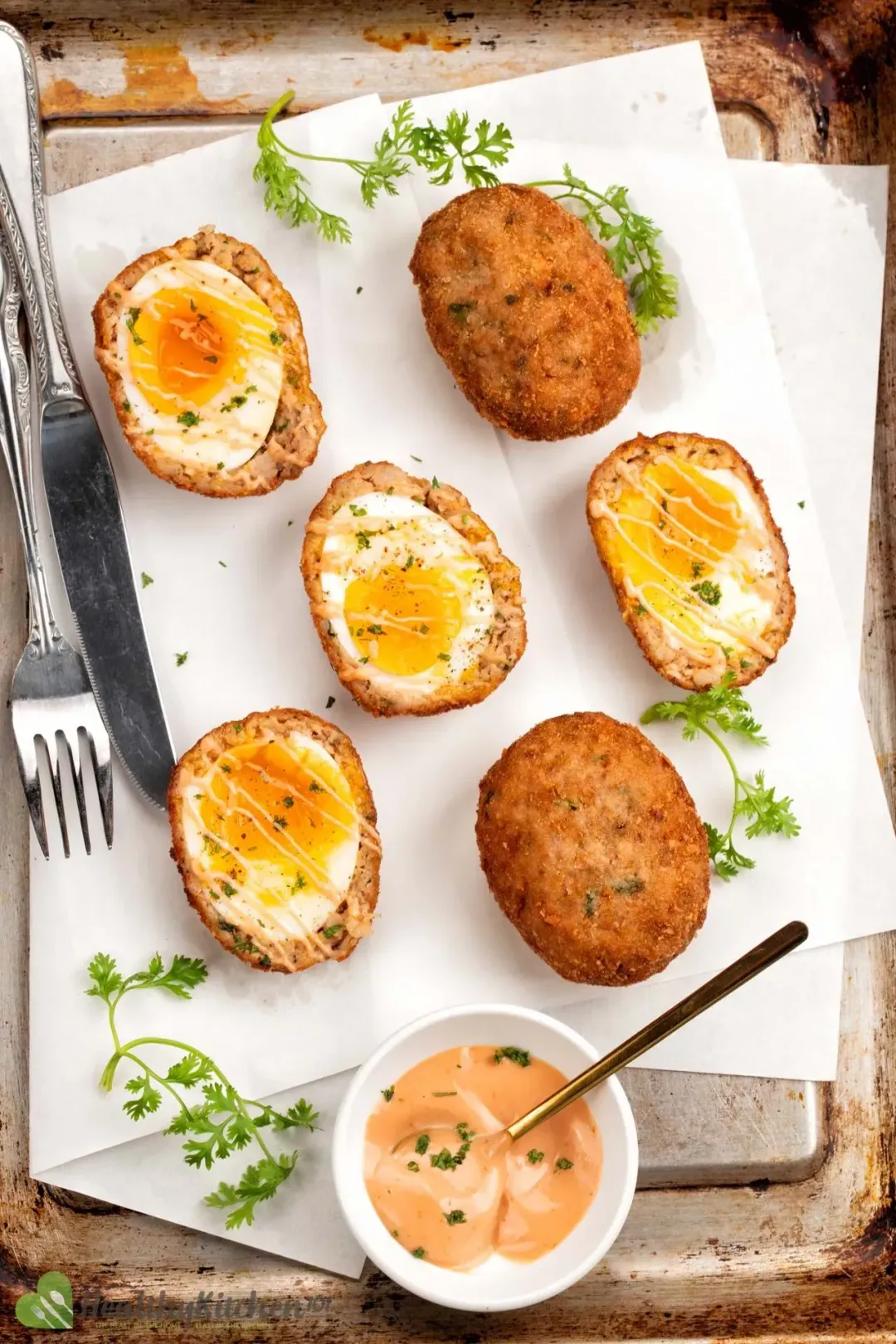
And for dessert, instead of having sweet treats, we suggest cleansing your palate with refreshments. A simple juice, low-sugar sorbet, or juice-based cocktail should do the trick.
When you do plan a 3-course meal, remember to keep track of your calorie, sodium, and saturated fat intake. We don’t want to over-consume anything.
So there’s a few ideas of what to serve with scotch eggs. Choose whichever you like because at the end of the day, it’s all about what sounds good to you.
If you’d like to enjoy a common American breakfast or an even more divine dish, try this traditional egg drop soup, the best pickled eggs you’ll have, or this delicious and healthy savor.
Scotch Egg Recipe
Today's scotch eggs recipe is a healthy take on the classic beloved British snack. It's delicious, simple, and takes only 20 minutes to make.
- cook TIME 10 mins
- prep TIME 5 mins
- total TIME 20 mins
- INACTIVE TIME 5 mins
- COURSE Appetizer
- CUISINE British
- SERVINGS servings
- CALORIES 207 kcal
INGREDIENTS
- 4 medium eggs (cold)
- 6 oz 85% lean ground pork
- 1 tbsp all-purpose flour
- 2 tbsp whole milk
- 1/2 cup plain panko breadcrumbs (*)
- 1/2 tsp garlic (finely minced)
- 1/4 tsp oregano
- 1/4 tsp fresh thyme
- 1/8 tsp salt
- 1/4 tsp paprika
- 1/4 tsp ground black pepper
- 1 tsp fresh cilantro (chopped)
- 1 tsp Heinz ketchup
- 1 tbsp Japanese mayonnaise
- 1 cup canola oil (*)
INSTRUCTIONS
Make the sausage: In a large bowl, mix ground pork with 1/2 tsp garlic, 1/4 tsp oregano, 1/4 tsp fresh thyme, 1/8 tsp salt, 1/4 tsp paprika, 2 tbsp whole milk, 1 tbsp all-purpose flour, 1/8 tsp black pepper, and 1/2 tsp chopped cilantro.

Mix well, cover with plastic wrap, and let it rest in the fridge for 5 minutes.
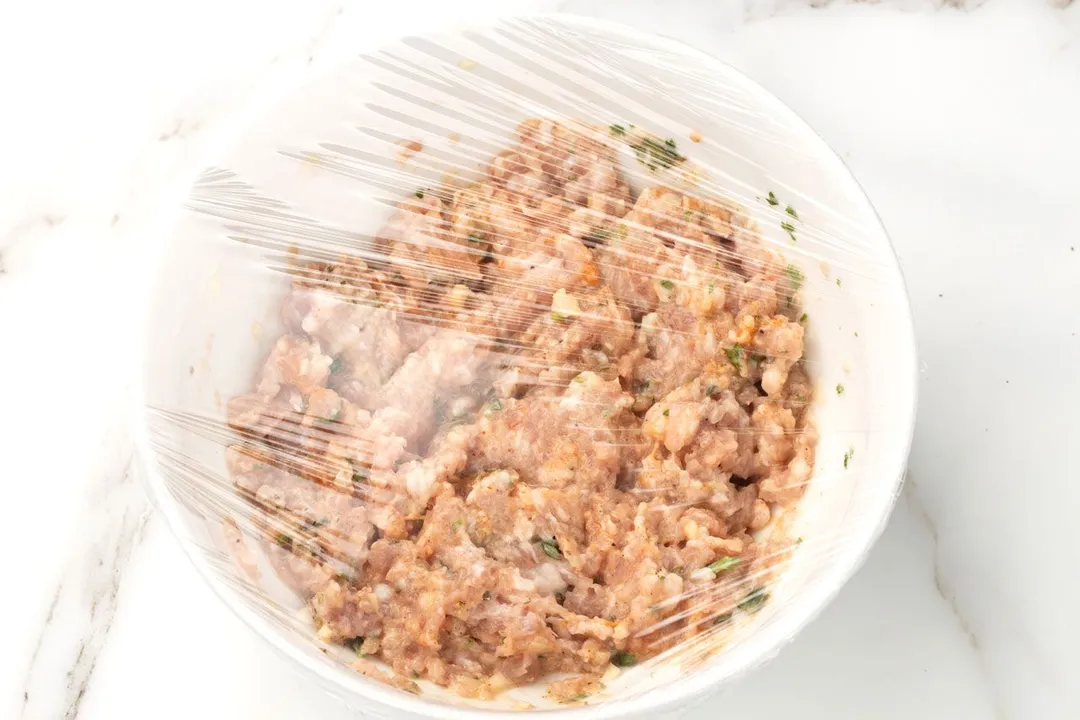
Make the sauce: in a small bowl, combine 1 tsp Heinz ketchup and 1 tbsp Japanese mayonnaise. Mix well and set aside.
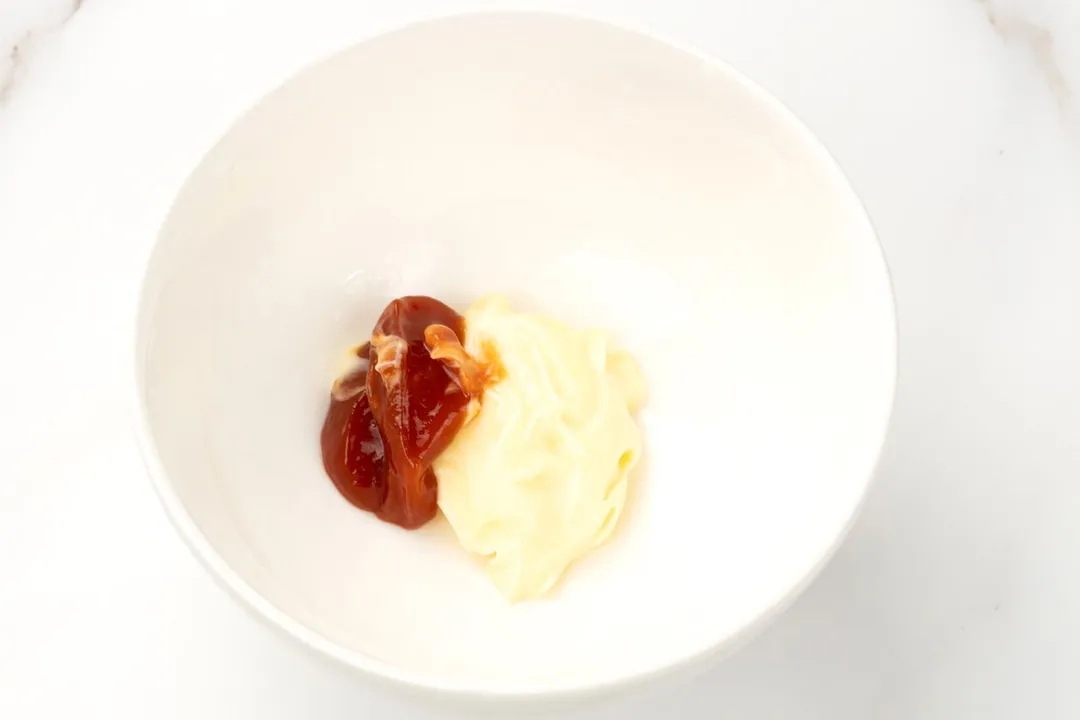
Boil the eggs: while the pork is resting, bring a large pot of water to a boil over high heat. Once boiling, gently lower the eggs into the pot and boil for 6 minutes. Turn off the heat and transfer the eggs to a bowl of iced water, let them rest for 2 minutes before peeling the shells.
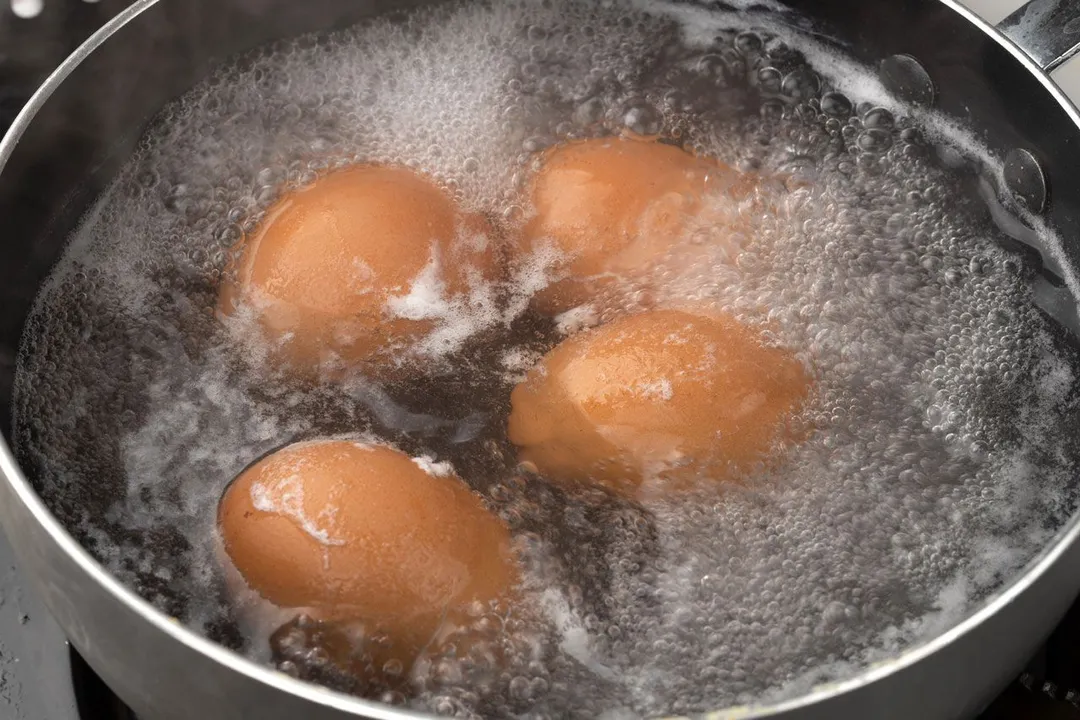
Wrap the eggs: lay a piece of cling film on the cutting board. Divide the sausage into 4 equal portions. Spread one portion thinly on the plastic wrap. Place one egg in the middle, gather the corners of the cling film, and wrap the sausage around the egg. Repeat with the remaining eggs and sausage.
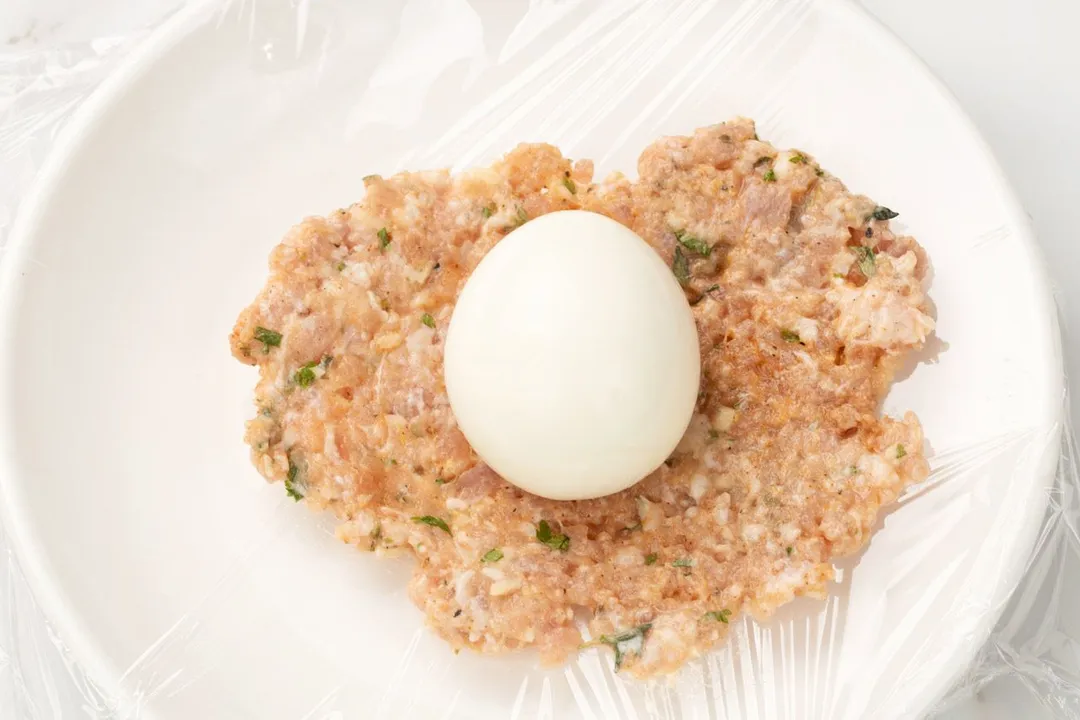
Roll in breadcrumbs: add 1/2 cup breadcrumbs to a large bowl. Roll the meat-covered eggs in the breadcrumbs to coat evenly.
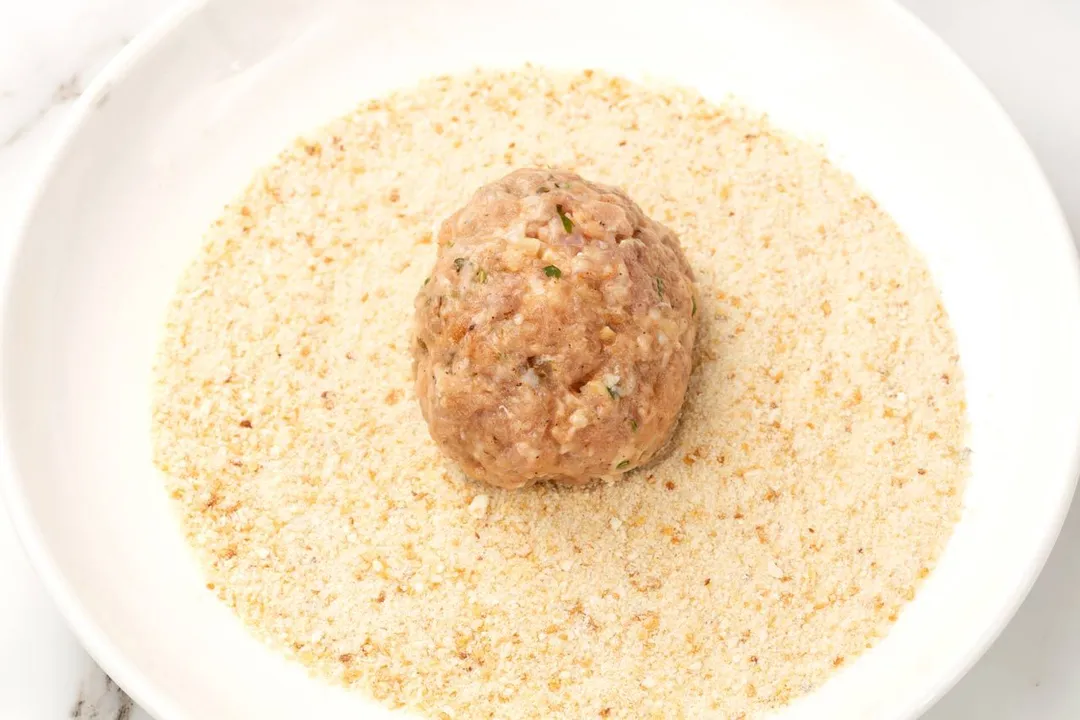
Fry the scotch eggs: in a saucepan, heat canola oil over medium heat for 1 minute (drop some breadcrumbs into the oil, if the oil bubbles, it’s ready for frying.) Gently lower scotch eggs into the oil with a slotted spoon and cook for 1 minute. Once cooked, remove and transfer to a dish lined with paper towels to remove excess oil.
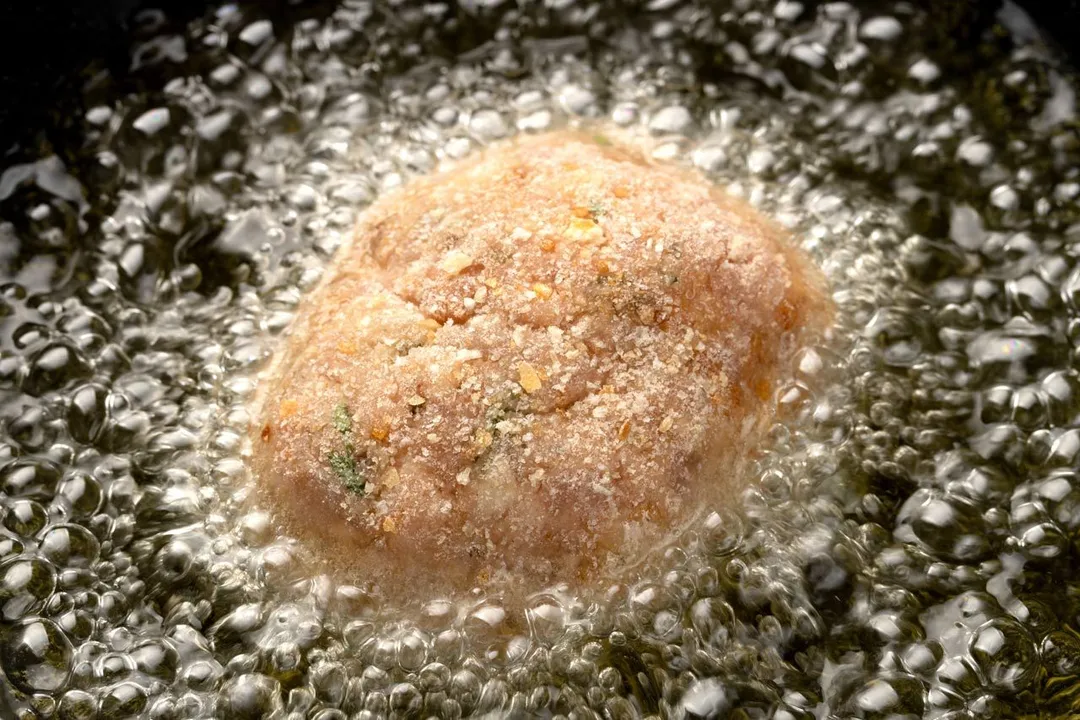
Serve: drizzle with the sauce and sprinkle the remaining 1/8 tsp black pepper and 1/2 tsp fresh cilantro on top of the eggs. Or put the sauce in a separate dipping bowl.
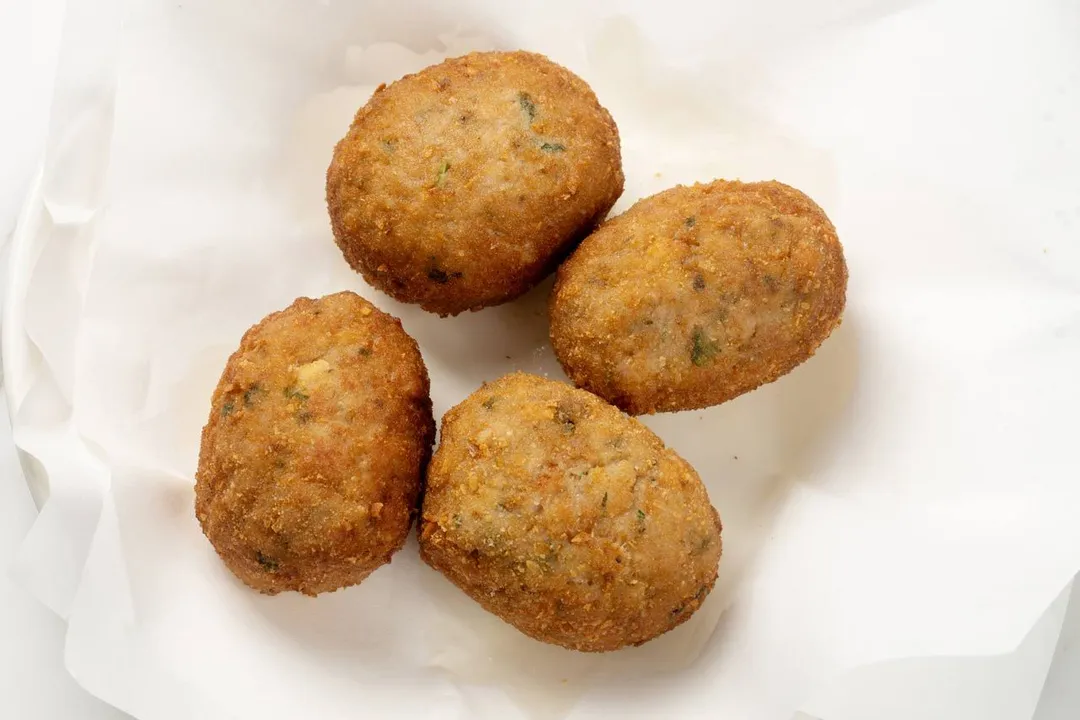
(*) Only part of this ingredient will end up in the final product and we have calculated nutritional values based on that amount. The whole amount is needed for coating the eggs and deep-frying, but you will end up consuming less than the listed amounts. The actual amounts being consumed are approximately:
- 2.88 tsp breadcrumbs
- 1 tsp canola oil
NUTRITION
Tuyet Pham
Head Chef, Culinary ConsultantLuna Regina
Writer, AuthorLizzie Streit, MS, RDN, LD
Nutrition Reviewer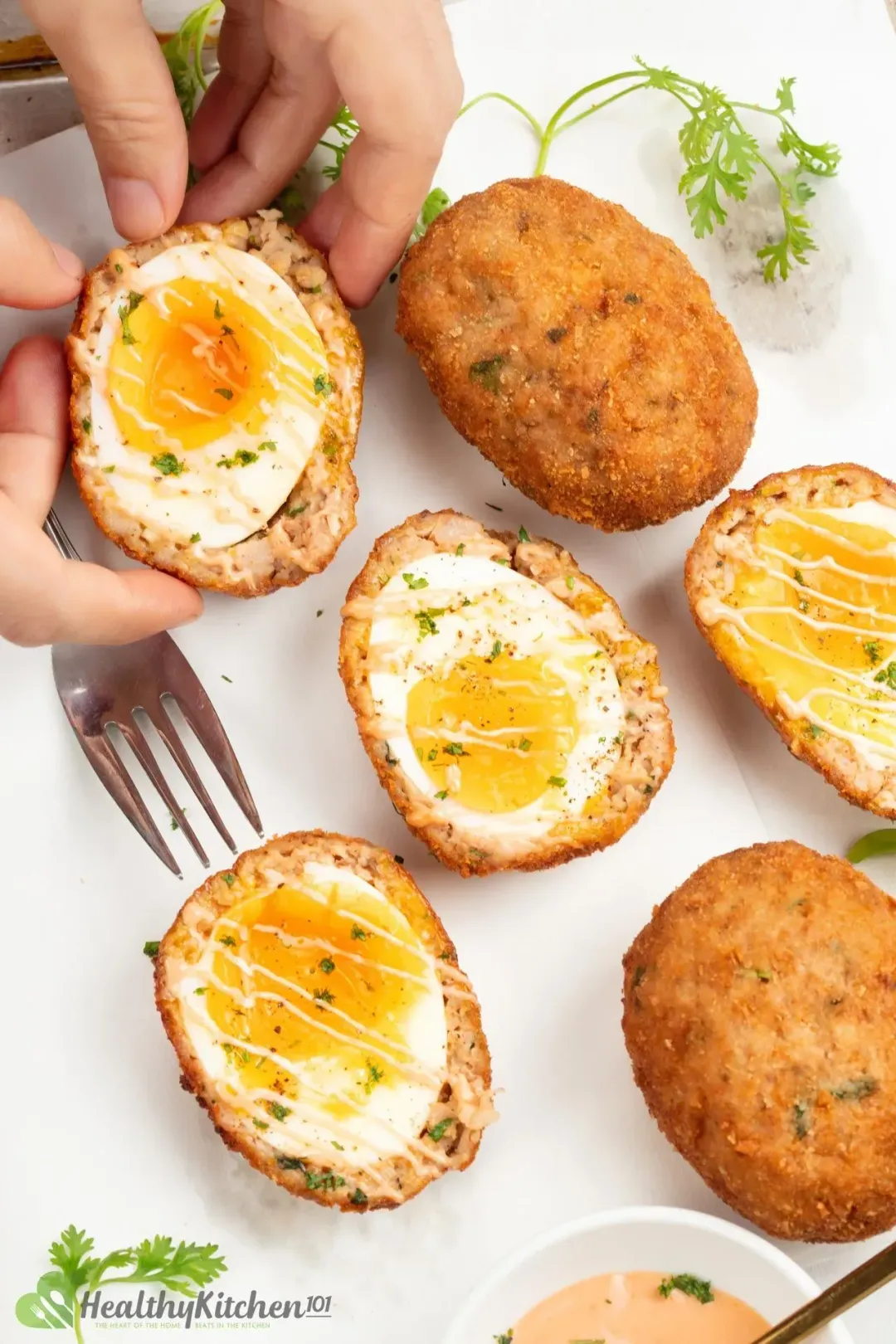
- NannieI recently cooked the scotch egg and it turned out really delicious! The subtle flavors of the herbs used in the filling were a great complement to the crispy outer layer.
- Ellea26This recipe is a fun and unique way to enjoy eggs
